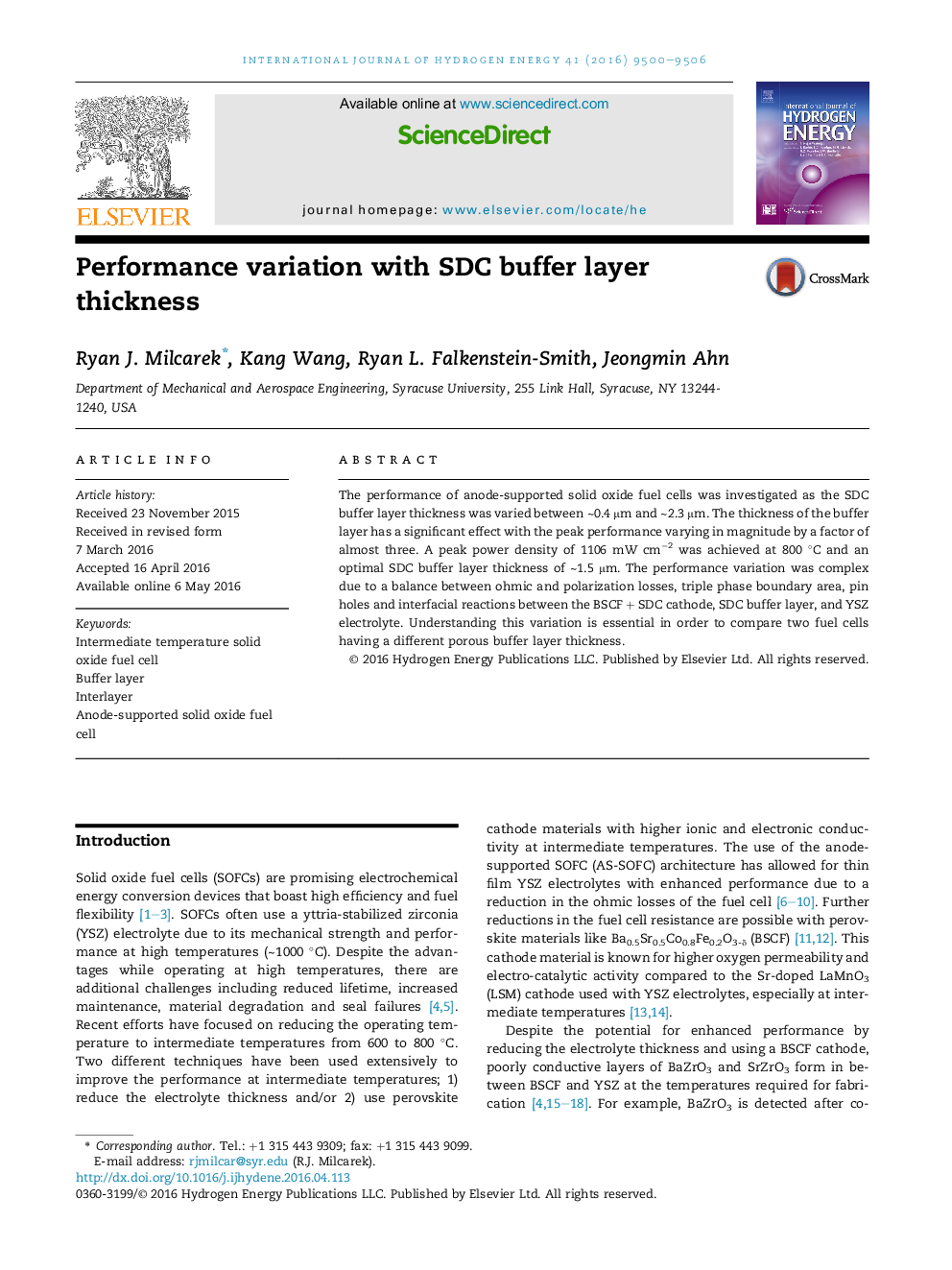| Article ID | Journal | Published Year | Pages | File Type |
|---|---|---|---|---|
| 7710518 | International Journal of Hydrogen Energy | 2016 | 7 Pages |
Abstract
The performance of anode-supported solid oxide fuel cells was investigated as the SDC buffer layer thickness was varied between â¼0.4 μm and â¼2.3 μm. The thickness of the buffer layer has a significant effect with the peak performance varying in magnitude by a factor of almost three. A peak power density of 1106 mW cmâ2 was achieved at 800 °C and an optimal SDC buffer layer thickness of â¼1.5 μm. The performance variation was complex due to a balance between ohmic and polarization losses, triple phase boundary area, pin holes and interfacial reactions between the BSCF + SDC cathode, SDC buffer layer, and YSZ electrolyte. Understanding this variation is essential in order to compare two fuel cells having a different porous buffer layer thickness.
Keywords
Related Topics
Physical Sciences and Engineering
Chemistry
Electrochemistry
Authors
Ryan J. Milcarek, Kang Wang, Ryan L. Falkenstein-Smith, Jeongmin Ahn,
